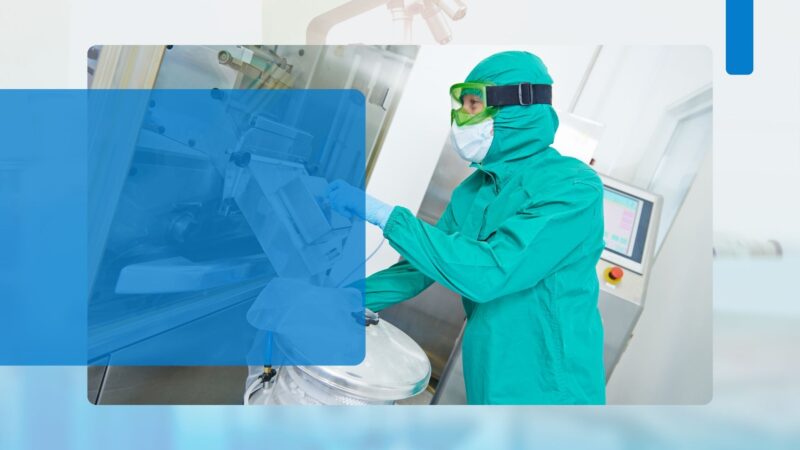In the ever-evolving landscape of pharmaceutical manufacturing, technological innovations play a pivotal role in enhancing efficiency, product quality, and patient outcomes. Among the crucial processes in pharmaceutical production, tablet manufacturing holds a prominent place. Tablets remain one of the most widely used dosage forms due to their convenience, stability, and ease of administration. Over the years, new tableting technologies have emerged, revolutionizing the way tablets are formulated, compressed, and coated. In this article, we delve into the realm of these cutting-edge advancements, shedding light on their impact and potential benefits.
From Traditional to Modern: Evolution of Tableting Technologies
Traditional tablet manufacturing processes have long been based on techniques such as direct compression, wet granulation, and dry granulation. These methods have served the industry well, but as demands for precision, consistency, and customization have grown, the need for more advanced technologies became apparent. Modern tableting technologies address challenges such as content uniformity, controlled release profiles, and cost-effective production.
Advancements in Tableting Technologies:
1. Continuous Manufacturing:
Continuous manufacturing has gained traction due to its potential to streamline production, reduce waste, and enhance product quality. Unlike batch manufacturing, which involves stopping and starting at each stage, continuous manufacturing involves a seamless flow of materials and processes. This enables real-time monitoring and adjustments, leading to improved control over tablet properties. Continuous manufacturing also offers advantages in terms of scalability, faster production, and reduced energy consumption.
2. 3D Printing/Additive Manufacturing:
3D printing, a technology initially associated with manufacturing small objects, has found its way into pharmaceuticals. In 3D-printed tablets, layers of powdered material are selectively fused together using binding agents. This allows for precise control over the drug’s release rate and the incorporation of multiple drugs or complex dosage profiles within a single tablet. The flexibility of 3D printing holds promise for personalized medicine and optimizing dosing regimens.
3. Co-Processed Excipients:
Co-processed excipients are blends of multiple excipients that have been optimized for specific tabletting processes. These excipients can enhance flow, compressibility, disintegration, and dissolution properties. By combining different excipients, manufacturers can tailor formulations to achieve desired tablet characteristics while maintaining regulatory compliance.
4. High-Speed Tablet Presses:
High-speed tablet presses leverage automation and advanced control systems to produce tablets at significantly higher rates compared to traditional machines. These presses ensure uniform tablet weight, thickness, and hardness, minimizing variability and waste. Additionally, they allow for quick changeovers between different tablet sizes and shapes, enhancing production flexibility.
5. Advanced Coating Techniques:
Tablet coatings serve various purposes, from improving taste and appearance to providing controlled release properties. Modern coating technologies, such as fluid bed coating and electrostatic coating, enable precise application of coatings, reducing the amount of coating material required. This leads to cost savings and more consistent coating quality.
Benefits and Implications:
The integration of new tableting technologies offers several benefits that impact both manufacturers and patients:
- Enhanced Efficiency: These technologies often streamline processes, reducing production times and costs.
- Improved Quality: Advanced control systems and real-time monitoring lead to better tablet uniformity and quality.
- Customization: Manufacturers can create tablets with tailored release profiles to meet specific patient needs.
- Sustainability: Continuous manufacturing and reduced waste contribute to more sustainable practices.
- Patient Compliance: Personalized dosing regimens and innovative dosage forms promote patient adherence.
Challenges and Considerations:
While new tableting technologies hold immense promise, their adoption comes with challenges:
- Regulatory Compliance: New technologies must meet stringent regulatory requirements to ensure patient safety.
- Scale-Up Complexity: Transitioning from lab-scale to commercial-scale production can be complex and require careful validation.
- Investment: Implementing these technologies requires significant capital investment for equipment and training.
- Technical Expertise: Manufacturers need to develop expertise in operating and maintaining these advanced systems.
The pharmaceutical industry’s pursuit of innovation has paved the way for remarkable advancements in tableting technologies. From continuous manufacturing to 3D printing, these technologies offer the potential to reshape pharmaceutical manufacturing practices. As these technologies mature and gain wider acceptance, they have the capacity to drive efficiency, improve product quality, and ultimately provide patients with more personalized and effective medications. While challenges remain, the transformative potential of these new tableting technologies positions them at the forefront of pharmaceutical manufacturing’s future.







